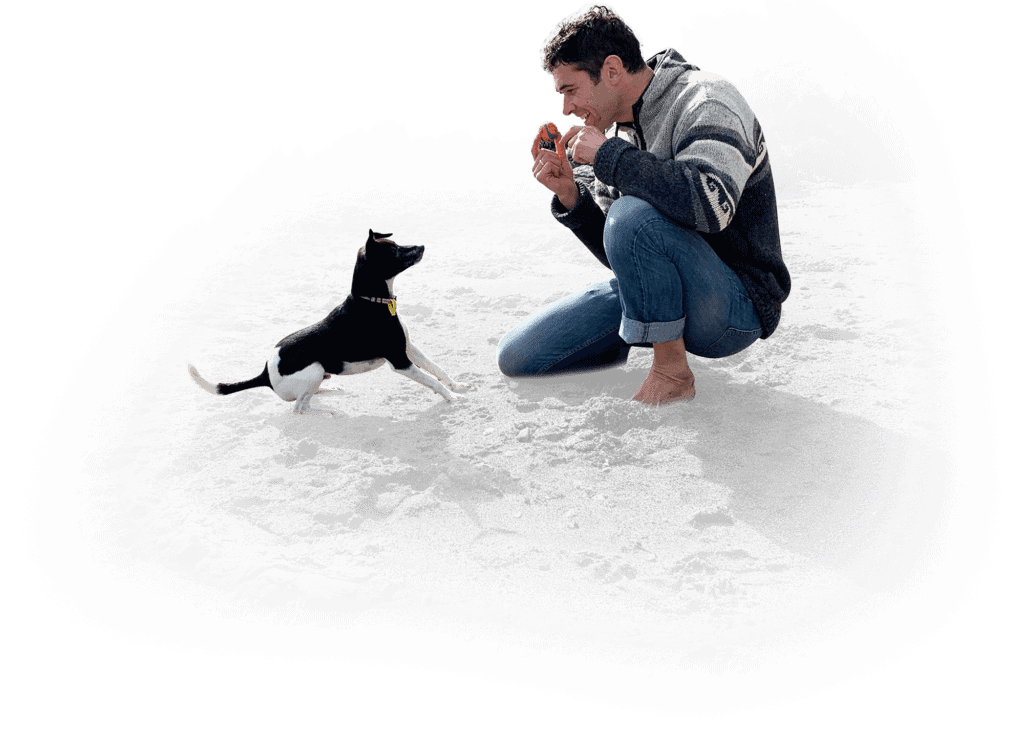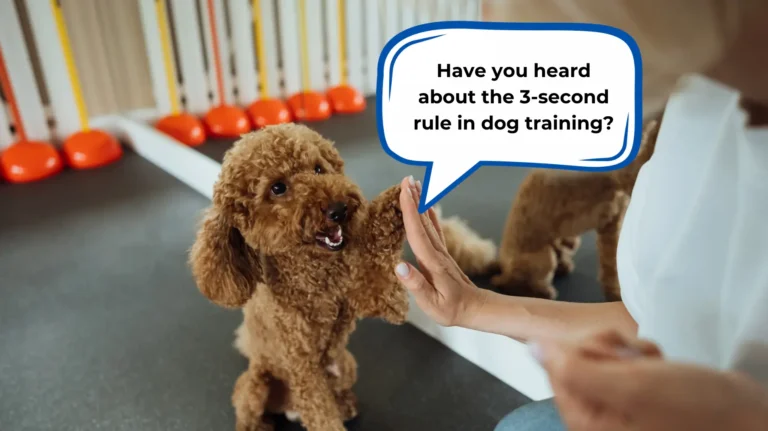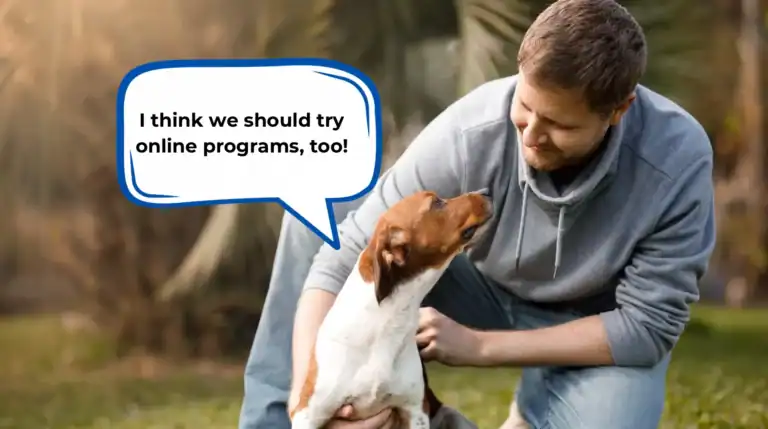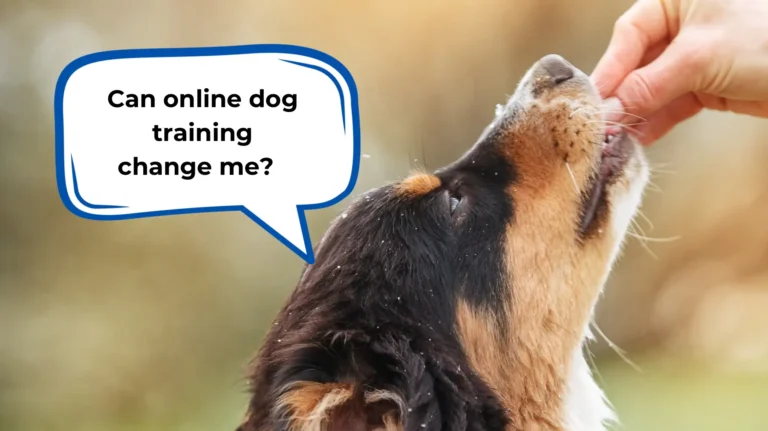“Doggy Dan, why does my puppy bark at me?” In this blog, we're going to talk about the two kinds of puppy barking and how you can address both the right way.
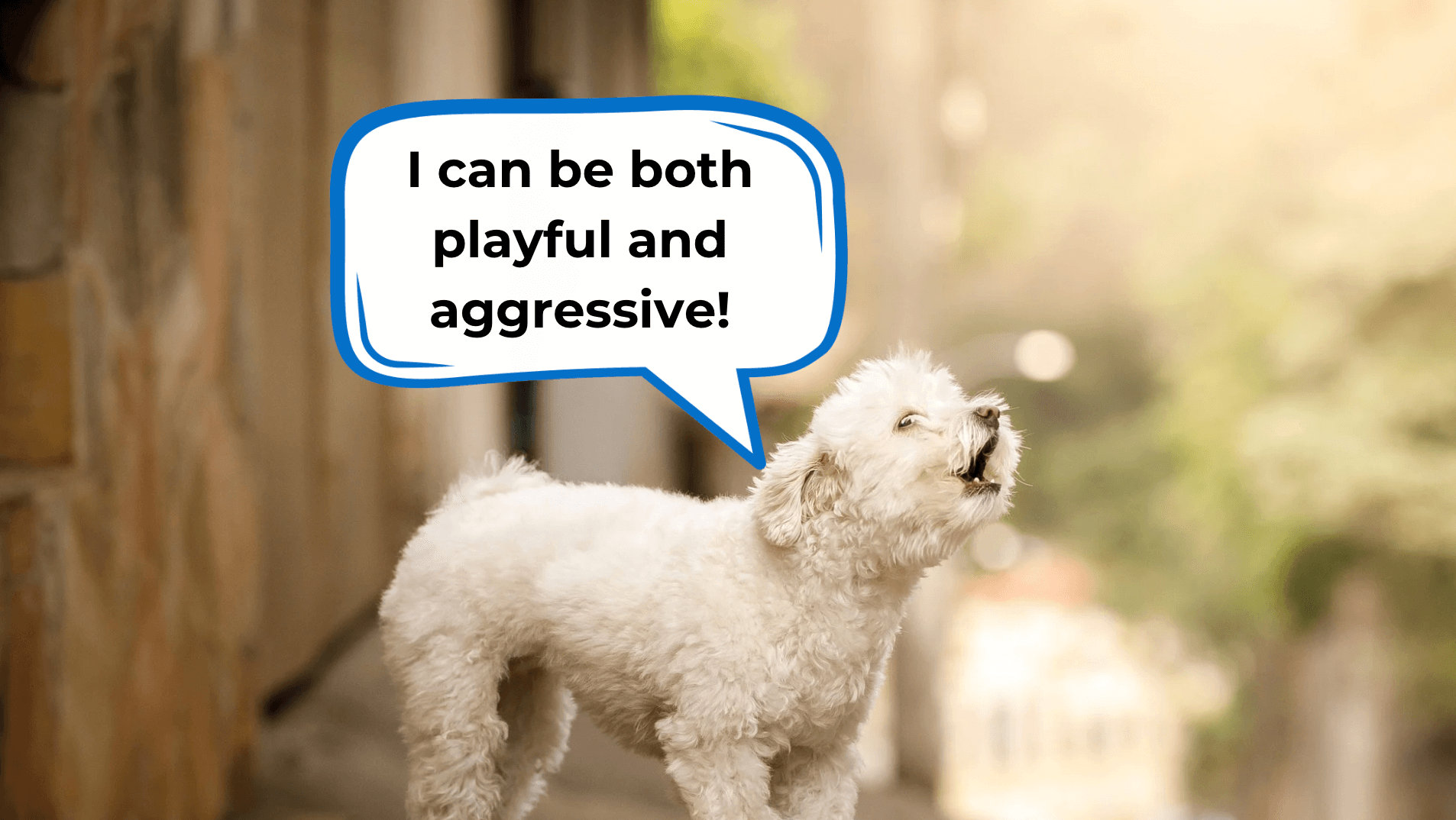
Many puppy owners become very concerned about their puppies barking for several reasons.
Firstly, it can be difficult to interpret whether a puppy is in trouble, needs help, or simply wants to play. Secondly, the noise can be quite distracting; puppies have loud, high pitched barks that readily grab attention. Thirdly, many people struggle to stop their puppies from barking, which can become a growing problem once puppies grow up. But what you need to know is that Puppies bark for many reasons.
However, there are a couple of key reasons, and I'd like to differentiate between those types. For example, one type of barking is when the puppy is very demanding, wanting to play, cuddle, be picked up, or fed.
Another type is when a puppy is scared, such as hearing a noise, seeing something new, or noticing cars on the street for the first time, triggering an alerting bark.
Puppy barking is a topic that needs to be understood before you can stop barking issues altogether.
Hi, I'm Doggy Dan, and this blog will tell you everything you need to know to deal with both playful barking and demand barking.
Read on!
Key Takeaways:
- Decoding Barks: Puppies use barking to communicate needs and emotions; learn to distinguish playful from aggressive barks.
- Early, Consistent Training: Address barking issues early with consistent methods like timeouts; avoid relying solely on treats.
- Establish Leadership: Be a calm leader, meeting needs while setting boundaries to prevent manipulation and ensure a well-adjusted puppy.
Table of Contents:
Understanding Puppy Barking
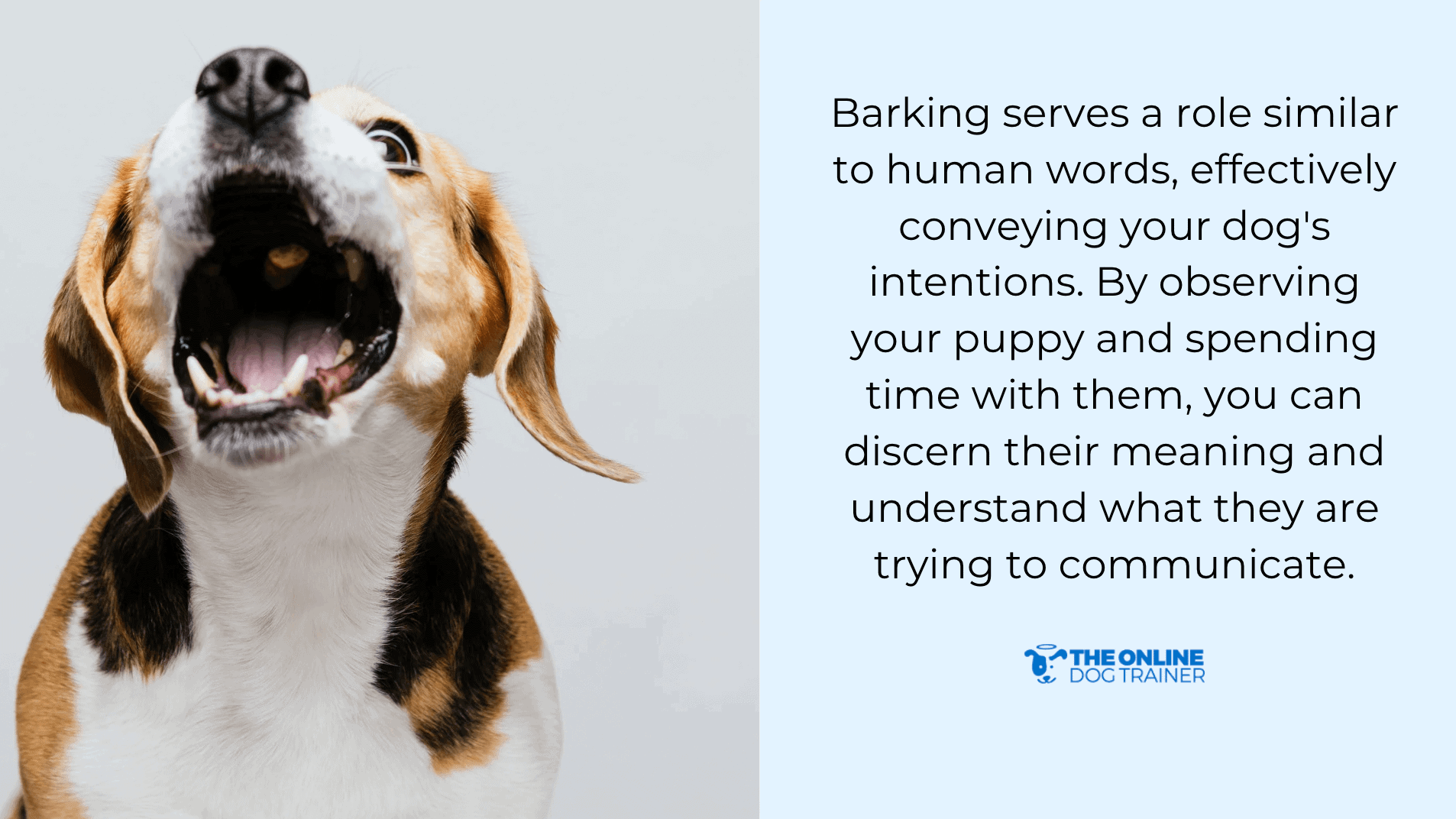
Canine Communication: Why Dog Barks
Barking serves a role similar to human words, effectively conveying your dog's intentions. By observing your puppy and spending time with them, you can discern their meaning and understand what they are trying to communicate. These sounds are not random; they express feelings and needs, such as wanting water, needing to go outside, desiring a walk, or seeking a cuddle. Puppies possess emotions similar to humans despite common beliefs against anthropomorphism. I have proven this true as a based my dog training in dog psychology.
Excessive Barking from Fear
Puppies bark when scared.
Their barks act as an alert or warning, much like a short, sharp bark can signal an alarm. The barking is similar to wild puppies alerting their pack. You can stop a pup's barking spree by making them understand that there is no threat. Since addressing fear-based barking becomes more challenging as puppies age, it's crucial that dog owners spend time in helping their dog understand that there's no real threat, and if there is, the owners will be the one to handle them.
(This training — helping dogs handle danger — is actually an important part of training, and is included in my Five Golden Rules for Dog Training. You can click this link to learn more about it.)
When someone comes to the front door, the puppy may bark louder and more aggressively if they feel the person is a threat or if they feel that your decision to allow the person entry is wrong.
Understanding and interpreting the reason for the bark is vital to stop and prevent barking. Feeling their emotions is important, too, when it comes to helping them overcome fears.
JOIN OUR FREE CLASS: TURN REACTIVE ANXIETY INTO CALM CONFIDENCE AND ENJOY A STRESS FREE PUPPYBarking for Wants and Needs
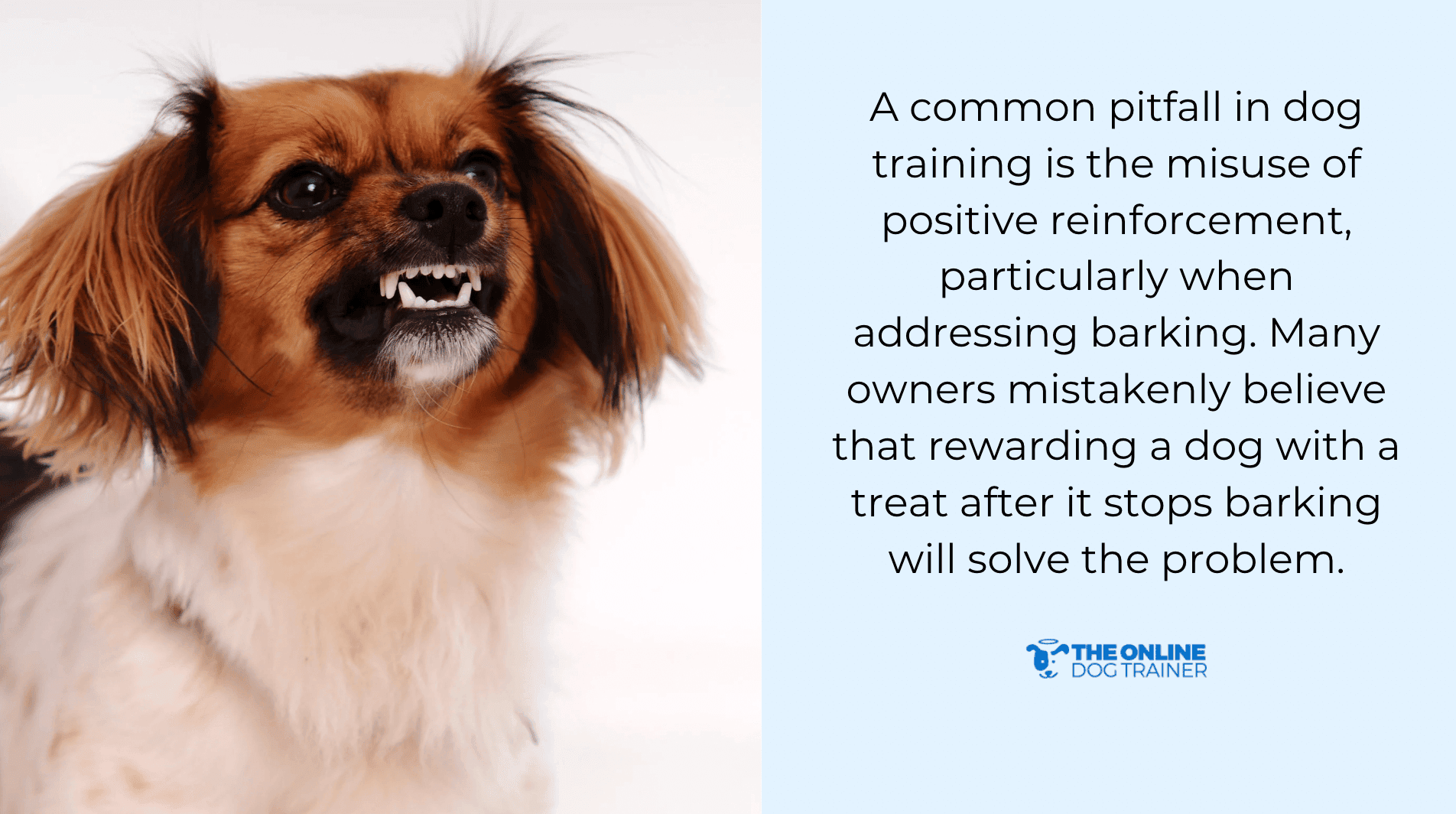
A common pitfall in dog training is the misuse of positive reinforcement, particularly when addressing barking. Many owners mistakenly believe that rewarding a dog with a treat after it stops barking will solve the problem. However, this often backfires due to improper timing.
Here's why: the dog barks, the owner commands ‘no barking,' and then presents a treat. The dog, upon seeing the treat, naturally ceases barking. But the dog associates the entire sequence—barking, being told to stop, and then receiving a treat—with the reward. This creates a logical loop in the dog's mind: barking leads to treats. Consequently, the behavior can escalate, especially in situations like someone approaching the door. This is a short-term fix that fails to address the underlying cause of the barking.
Instead, I recommend a simple ‘time-out' approach. This can be implemented gently and without aggression. Calmly guide the dog to a designated time-out area, either by picking it up or using a leash. Release the dog when it has calmed down.
Crucially, establish yourself as the leader of the household. Just as a well-structured family thrives when parents set clear boundaries, a dog benefits from understanding its place within the hierarchy. When the owner is perceived as the decision-maker, the dog feels secure and relaxed.
Allowing a puppy to believe it's in charge can lead to significant behavioral issues. While it's natural to want to pamper our adorable puppies, this can quickly result in aggression or persistent disobedience. If your puppy exhibits these behaviors, seek professional help. Look for a trainer who understands the importance of establishing a clear hierarchy and respecting the dog's natural inclination to follow a leader.
In my program, the ‘Dog Calming Code,' I delve into practical strategies for establishing this leadership role. The program offers straightforward methods for ensuring your puppy understands and respects your authority. Whether you choose online resources or in-person training, prioritizing this aspect is essential for a harmonious relationship with your dog.
FREE TRAINING: END REACTIVITY FEAR & FIND PEACE TOGETHER (7 DAYS TO ZERO REACTIVITY)Signs of Playful Barking
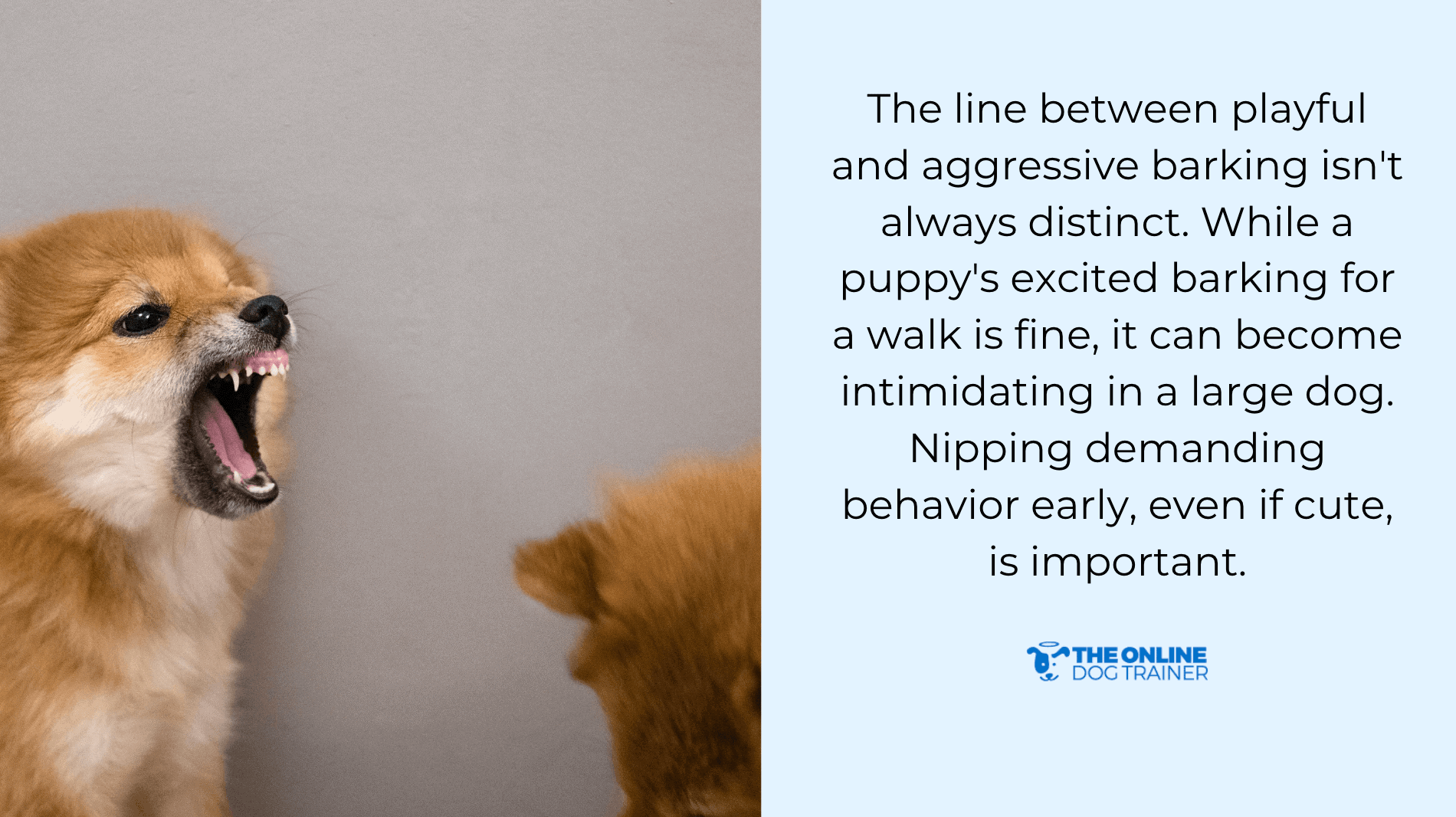
Signs of playful barking are numerous, with body language being a key indicator.
A wagging tail, specifically one that's in the middle, not too high or low, and wagging gently or quickly from left to right, is a strong sign of happiness and excitement. A relaxed body, perhaps with some wiggling, or the classic play bow, where the front of the body lowers and the rear rises, are also clear signs of playfulness. Bouncing and jumping, like a playful lamb, further confirm this. The tone and frequency of the bark help identify playfulness. High-pitched, short bursts of sound often indicate playfulness, especially in a safe space with toys.
Running around, “zoomies,” or grabbing toys are also signs. Frustration barking can occur when toys are withheld. If the barking stops when you engage in play, it's a clear demand for interaction.
The line between playful and aggressive barking isn't always distinct. While a puppy's excited barking for a walk is fine, it can become intimidating in a large dog. Nipping demanding behavior early, even if cute, is important. A small puppy “bossing” you around can become problematic as they grow.
Signs of Aggressive Barking

Aggressive barking is marked by distinct body language indicators.
A puppy displaying a stiff posture, raised hackles, direct eye contact, and bared teeth is signaling aggression. This may be accompanied by snarling or growling, with the tail often held upright.
Their ears might be pinned back or forward in an aggressive stance, and they tend to be static, not bouncing around.
Assess the situation when gauging if your dog is exhibiting aggressive biting: what's the setup? If the dog barks louder and their barking is becoming more intense as someone approaches, especially with the door opening, trust your gut feeling — it's likely aggression. The tone and frequency are also telling; aggressive barking is typically low, deep, and continuous, escalating with intensity and rarely stopping without intervention. Lunging or snapping alongside the barking further confirms its aggressive nature.
FROM REACTIVE TO OBEDIENT: FREE WEB CLASS TEACHES YOU THE PROVEN SECRETS TO CALMER DOGSPossible Reasons for Aggressive Barking
Aggressive barking can stem from various reasons, including fear or anxiety, such as feeling threatened. Resource guarding, where a puppy protects food, toys, or space, is another common cause. Overstimulation or frustration, like not getting what they want, can also lead to aggression. A lack of socialization and training can exacerbate these tendencies.
How to Respond to Playful vs. Aggressive Barking
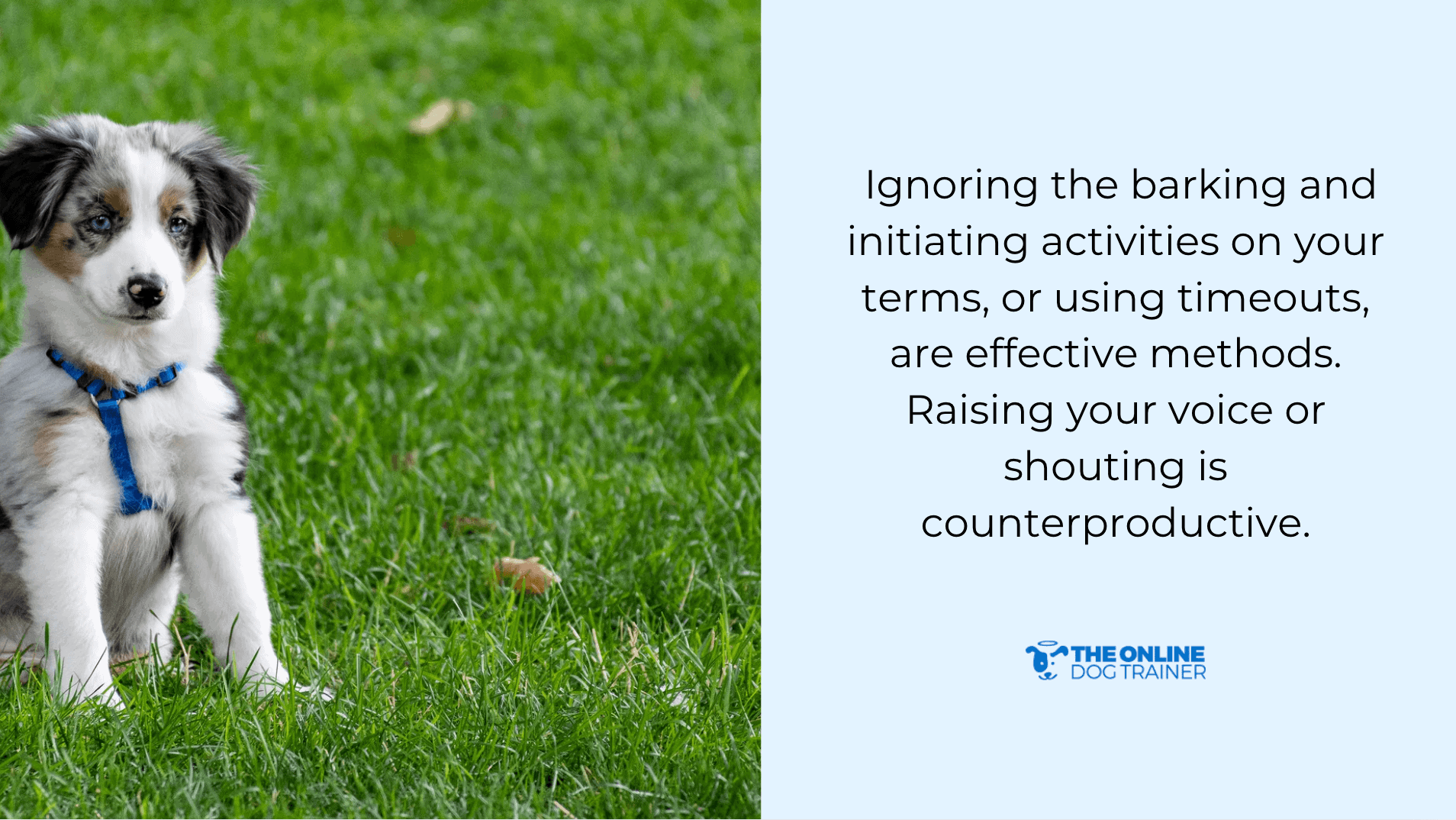
Playful barking is generally acceptable and can be encouraged in a positive way. Engage in interactive play, provide mental stimulation with toys and training, and step in early with calm hand hold, a leash walk, or a short time out if needed. Teach commands like “quiet” to manage excessive barking. Recognizing that puppies are logical, avoid reinforcing demanding behavior by immediately giving in to their barks. Ignoring the barking and initiating activities on your terms, or using timeouts, are effective methods. Raising your voice or shouting is counterproductive.
Addressing aggressive barking requires a different approach. Remain calm and do not react aggressively, as this usually worsens the situation. Negative attention is still attention. Identify and remove triggers whenever possible. Avoid relying on positive reinforcement with treats to stop aggressive barking, as this can backfire by associating barking with rewards. Accommodate physical exercise to help them burn those excess energy. Timeouts are a better approach. Establish yourself as the leader who sets the rules. If the aggression persists, seek professional help. Remember, allowing your puppy to believe they are in charge can lead to significant problems.
When to Be Concerned and Seek Professional Help to Stop Barking
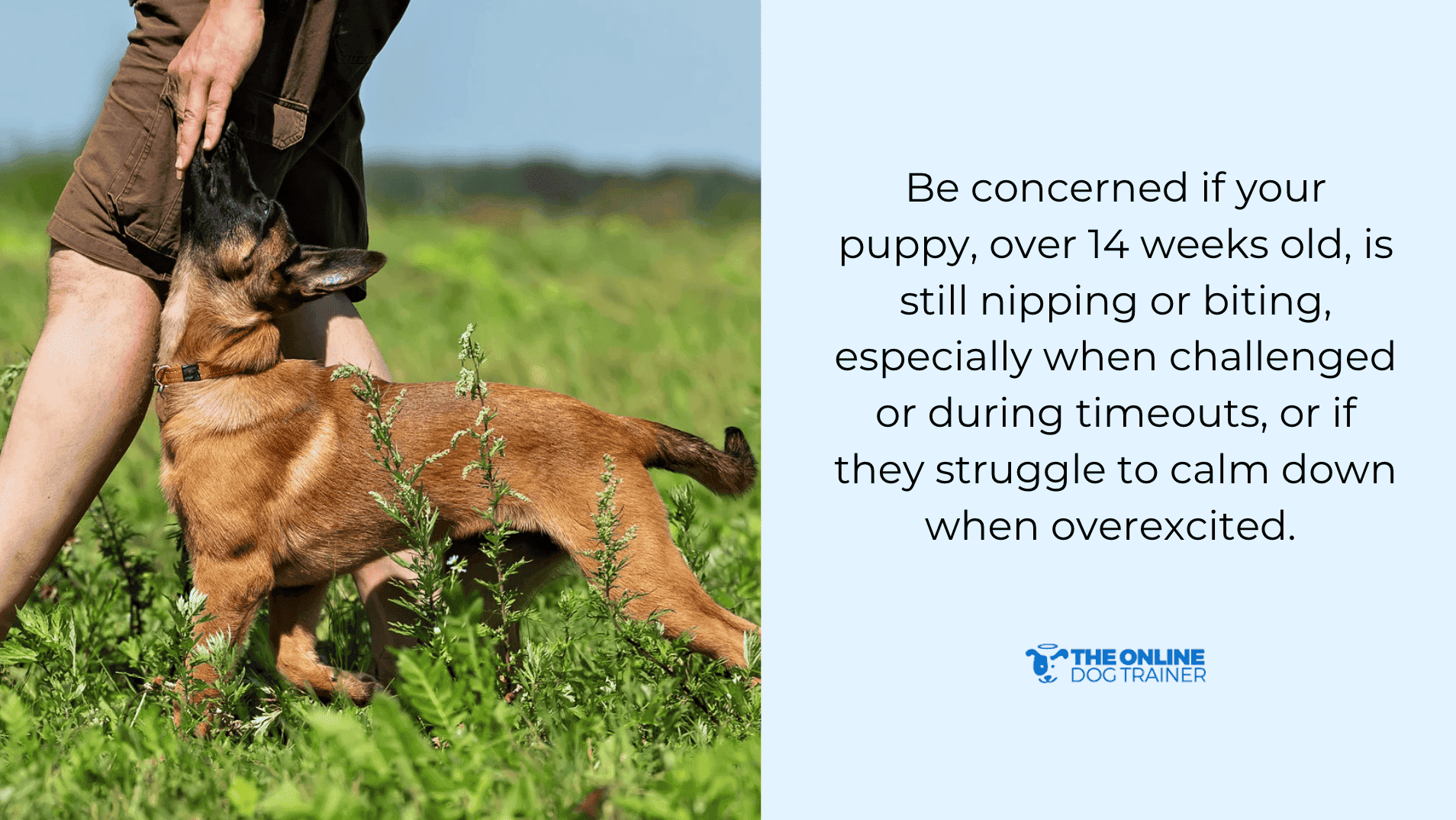
Pet parents, if you're struggling to understand your puppy's barking, it's best to seek help sooner rather than later. Trust your instincts and “feel into” the situation. Remember, early intervention is crucial for long-term behavior management. Many puppy barking issues can be resolved quickly, often within days or a week, with effective training, including powerful online resources like the dog calming code. Don't wait months hoping your puppy will outgrow the problem; persistent barking can become a systemic issue. If your puppy's barking persists, even when ignored, and you can't manage it within a few days or weeks, seek assistance.
Be concerned if your puppy, over 14 weeks old, is still nipping or biting, especially when challenged or during timeouts, or if they struggle to calm down when overexcited. Consider consulting a trainer or behaviorist if you have a breed known for excessive barking, if you own a large breed dog exhibiting early signs of aggression, or if you have a high-energy dog prone to barking or aggression around people or other dogs. These dogs can be challenging to handle due to their speed and activity levels, so early intervention is vital.
Training a puppy can be challenging, especially when you love them and want to fulfill their desires. However, effective training involves doing what's right for your dog, even if it's difficult. Using timeouts or ending play sessions can be beneficial in the long run. Early intervention is essential for effective long-term behavior management. For those who find it tricky to diagnose their dog's behavior, some programs like The Online Dog Trainer allow people to send in video clips so a team of experts can diagnose exactly what is going on without any guesswork.
JOIN OUR FREE CLASS: TURN REACTIVE ANXIETY INTO CALM CONFIDENCE AND ENJOY A STRESS FREE PUPPYConclusion: You Can Stop Puppy Barking with The Dog Calming Code
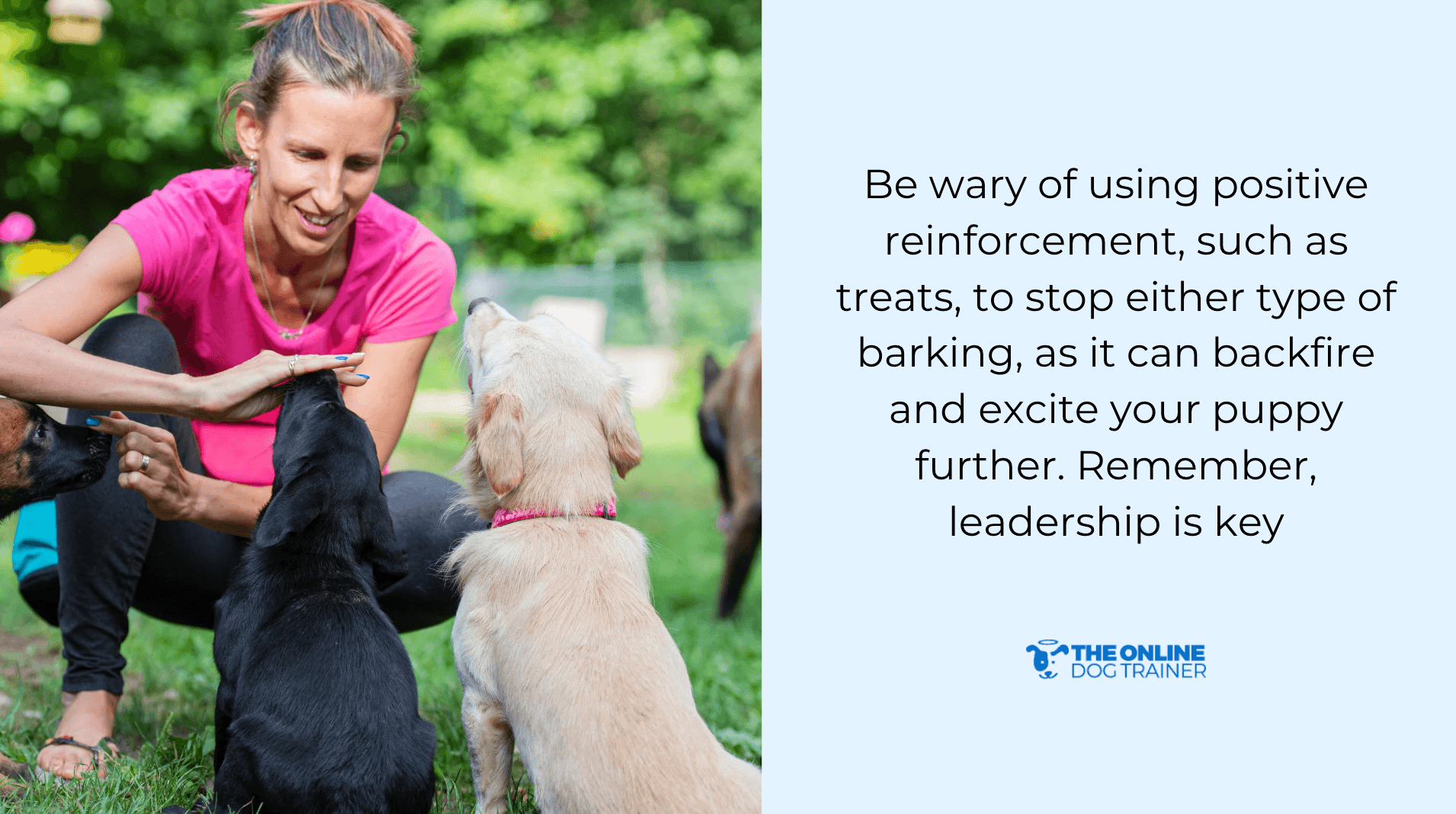
It's crucial to understand the distinct differences between playful and aggressive barking. Playful barking often involves happy, energetic behaviors, while aggressive barking is marked by stiff postures and threatening signals. Be wary of using positive reinforcement, such as treats, to stop either type of barking, as it can backfire and excite your puppy further. Remember, leadership is key. Gentle, loving leadership, where you set boundaries and show your puppy when enough is enough, is essential. Resources like the Dog Calming Code (DCC) should be considered to establish a healthy hierarchy.
Rest assured, nearly all puppy barking issues, especially in puppies under eight months, can be resolved quickly with the right training, often in just a few days or a week, as demonstrated by programs like the DCC.
Don't panic; if you're concerned, it's a sign you're a responsible owner seeking guidance. Trust your gut instinct. Ask yourself, “What's my best guess?” and “What's the situation?” Remember that training a puppy is about doing what's right for them, not always what's easy or what they want at the moment. Puppies are attention-seeking creatures, evolved to use their voice to get their needs met.
Be mindful that giving in to their barking can lead to manipulation and escalating demands. By stepping in as the leader and making decisions, you provide your puppy with a sense of security and happiness, freeing them from the burden of constantly assessing potential dangers.
You can learn more about the principles of stopping dog barking through my bestselling program The Dog Calming Code which can help many dogs and their owners overcome the barking issues in as fast as 7 days.

~Doggy Dan 🙂

